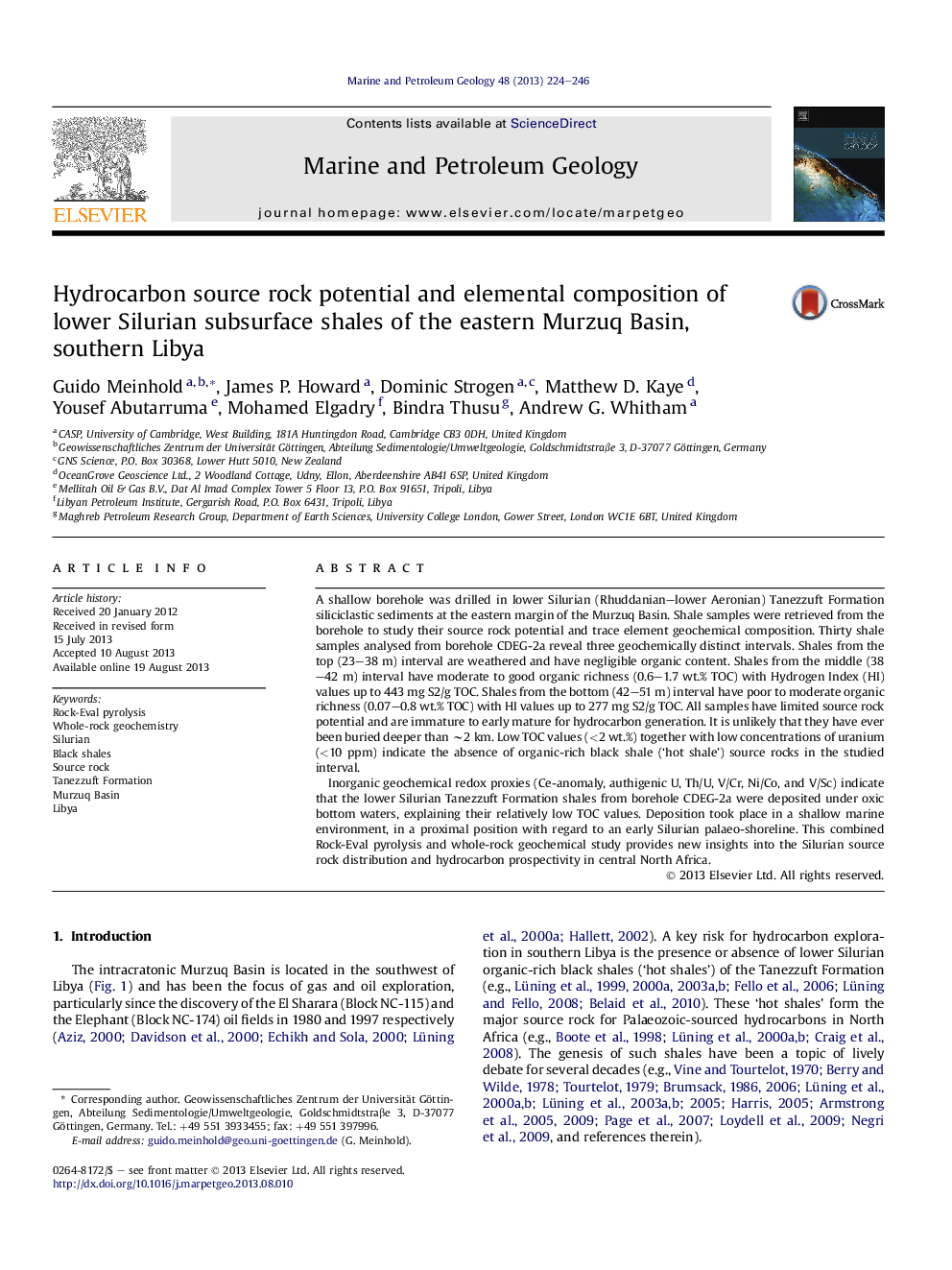| کد مقاله | کد نشریه | سال انتشار | مقاله انگلیسی | نسخه تمام متن |
|---|---|---|---|---|
| 4695830 | 1637176 | 2013 | 23 صفحه PDF | دانلود رایگان |
• Source rock data of lower Silurian shales from the eastern Murzuq Basin.
• Major and trace element composition of lower Silurian shales.
• Discussion of uranium values to estimate the source rock potential.
• Discussion of ancient bottom-water redox conditions.
A shallow borehole was drilled in lower Silurian (Rhuddanian–lower Aeronian) Tanezzuft Formation siliciclastic sediments at the eastern margin of the Murzuq Basin. Shale samples were retrieved from the borehole to study their source rock potential and trace element geochemical composition. Thirty shale samples analysed from borehole CDEG-2a reveal three geochemically distinct intervals. Shales from the top (23–38 m) interval are weathered and have negligible organic content. Shales from the middle (38–42 m) interval have moderate to good organic richness (0.6–1.7 wt.% TOC) with Hydrogen Index (HI) values up to 443 mg S2/g TOC. Shales from the bottom (42–51 m) interval have poor to moderate organic richness (0.07–0.8 wt.% TOC) with HI values up to 277 mg S2/g TOC. All samples have limited source rock potential and are immature to early mature for hydrocarbon generation. It is unlikely that they have ever been buried deeper than ∼2 km. Low TOC values (<2 wt.%) together with low concentrations of uranium (<10 ppm) indicate the absence of organic-rich black shale (‘hot shale’) source rocks in the studied interval.Inorganic geochemical redox proxies (Ce-anomaly, authigenic U, Th/U, V/Cr, Ni/Co, and V/Sc) indicate that the lower Silurian Tanezzuft Formation shales from borehole CDEG-2a were deposited under oxic bottom waters, explaining their relatively low TOC values. Deposition took place in a shallow marine environment, in a proximal position with regard to an early Silurian palaeo-shoreline. This combined Rock-Eval pyrolysis and whole-rock geochemical study provides new insights into the Silurian source rock distribution and hydrocarbon prospectivity in central North Africa.
Figure optionsDownload as PowerPoint slide
Journal: Marine and Petroleum Geology - Volume 48, December 2013, Pages 224–246
